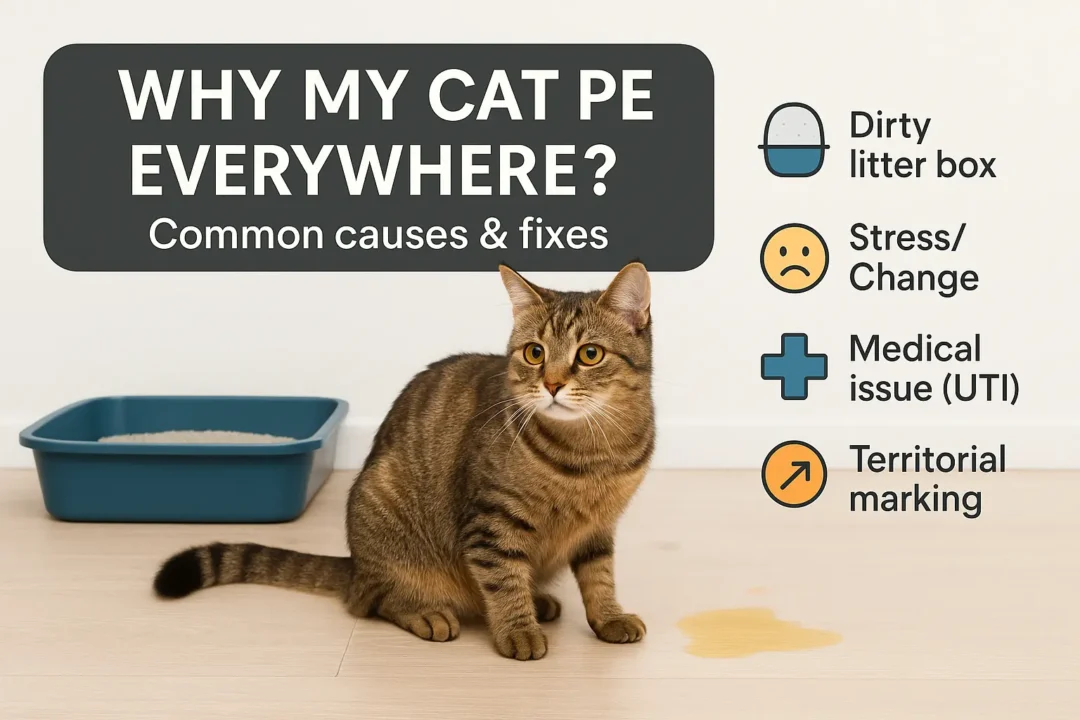The first thing that comes to mind when your cat starts urinating in the toilet is frustration. The most important thing for a cat’s owner to understand is that this behavior isn’t an act of spite but a sign of desperation. The inability to urinate properly is one of many signs that your cat has Feline Lower Urinary Tract Disease. This condition can be painful or even fatal.
Ignoring this symptom or punishing your cat for it can have devastating consequences. Unlike a rare penny that might be worth millions, this common sign could cost you thousands in emergency vet bills—or worse, the life of your pet. Before you do anything else, you need to determine if you’re dealing with a medical emergency or a behavioral issue.
Medical vs. Behavioral: An Urgent Symptom Checker for Cat Owners
Use this table to quickly assess the situation. If your cat displays any signs from the “Medical Emergency” column, contact your veterinarian immediately.
| 🩺 MEDICAL EMERGENCY SIGNS (Call a Vet NOW) | 😿 Behavioral Issue Signs (Still See a Vet First) |
| Straining to pee with little or no urine coming out. | Urinating on soft surfaces like beds, laundry, or rugs. |
| Crying out in pain while in the litter box or attempting to urinate. | Peeing near windows or doors (a sign of territorial marking). |
| Frequent, small urination in multiple spots. | There are new pets, people, or major changes in the home. |
| Excessively licking the genital area. | Another cat in the house is bullying them away from the litter box. |
| Blood in the urine (may appear pink or reddish). | The litter box is dirty, in a loud area, or you recently changed the litter type. |
| Vomiting, lethargy, or hiding along with urinary changes. | The cat is not spayed or neutered (spraying is common). |
CRITICAL WARNING: For male cats, the inability to urinate is a FATAL MEDICAL EMERGENCY. A urethral obstruction can lead to death in less than 24-48 hours. Do not wait
What You MUST Do Now (And What You Should NEVER Do)
- Call Your Veterinarian First. This cannot be stressed enough. A physical exam and a urinalysis are the only ways to rule out serious medical issues like a urinary tract infection, bladder stones, crystals, or FIC (Feline Idiopathic Cystitis). All behavioral treatments are useless if your cat is in physical pain.
- Clean Soiled Areas with an Enzymatic Cleaner. Do NOT use ammonia-based cleaners, as they smell like urine to a cat and will encourage them to mark the spot again. Use a product specifically designed to break down pet urine proteins, like Nature’s Miracle or Anti-Icky-Poo.
- NEVER Punish Your Cat. Rubbing your cat’s nose in the urine, yelling, or isolating them will only increase their stress and anxiety, making the problem worse. They will learn to fear you and may start hiding their urination in places you can’t find, leading to more damage and delaying diagnosis of their pain.
FAQ: Your Top Questions About Inappropriate Urination
- Is it definitely a UTI?Not necessarily. While Urinary Tract Infections (UTIs) are a cause, Feline Idiopathic Cystitis (FIC), which is bladder inflammation linked to stress, is far more common in cats under 10. Bladder stones are also a frequent cause. Only a vet can tell the difference.
- Why is my cat peeing on my bed or clothes?Cats experiencing pain from a UTI or FLUTD often develop an aversion to the litter box, associating it with discomfort. They seek out soft, comfortable places like beds or laundry piles to relieve themselves where it hurts less.
- How many litter boxes should I have?The golden rule recommended by experts at the ASPCA and veterinary behaviorists is one litter box per cat, plus one extra. For a two-cat household, you need three boxes.
- Could stress be the cause?Yes, stress is a major trigger for both behavioral marking and medical FIC. A new pet, a change in routine, or even seeing a strange cat outside a window can be enough to cause a flare-up. Your vet can help you identify and manage environmental stressors.

